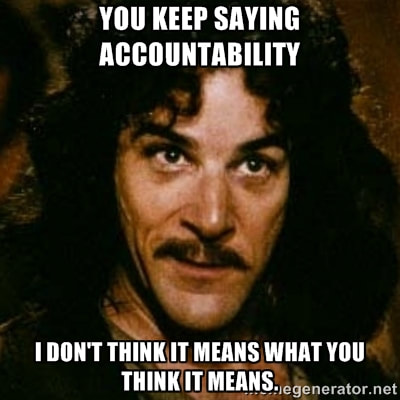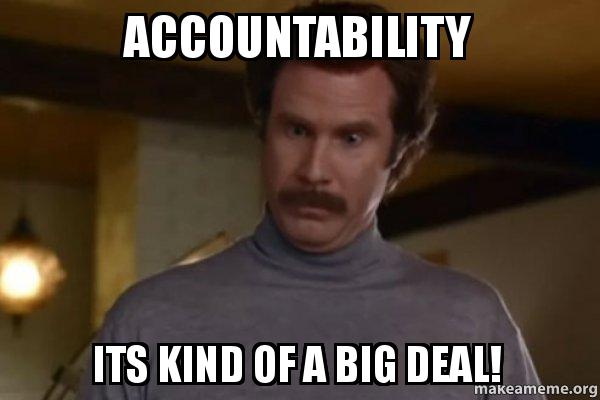|
Simple tools and practical insights for personal organization, scheduling and project management. Part 1 focuses on tips and tools for personal organization. Part 2 will address setting up a foundation for team organization. "Success tomorrow starts with making a plan today." Simple tools for personal organization, aka daily success, aka scheduling include:
1) a notebook 2) a pen 3) a computer with simple programs such as Google calendar 4) a phone with a task list or calendar (sync with computer) Making a daily plan should be a habit that helps you to set yourself up each day for success in the upcoming days activities. 1) make your handwriting legible 2) start with the date and think through your day 3) organize your tasks in relationship to importance 4) by keeping structure to your daily outline you can add notes (make sure they are legible) 5) update your task list as you accomplish items as well as when you add them 6) carry over unfinished tasks to the following day 7) make it a habit to set you list the day before, to update at intervals during the day as well as when new assignments come up Personal organization is a recipe for success. Success tomorrow starts with making a plan today. These simple habits are key to to clarify your activities according to your mission, to schedule for mission momentum and keep yourself accountable to following through. Dysfunction is easy. Writing sloppily, not keeping items in order and failing to follow through are all set backs that could lead to disaster. Stay on top of yourself - or as we say, "Don't get behind, that's where the farts are (read more HERE)." Clarity. Consistency. Accountability. For more information, tips and videos check out our webpage - http://www.izvents.com/words/category...
0 Comments
 How many times do you hear, “Someone needs to hold so-and-so accountable for their actions”? And the peanut gallery nods their head vehemently in agreement, “That’s right, it’s about time that so-and-so was held accountable for such-and-such.” People in a position of leadership (PIAPOL) are often fond of the peanut gallery, those that cheer them on in the execution of the leadership duties. Funny enough, the history of the peanut gallery comes from days past and referred to the cheapest tickets where the rowdiest vaudeville consumers heckled the performers. Needless to say, those in a position of leadership who only seek “yes men” to affirm their ever action seek the praise of those who are not fueled by vision or invested in progress. Magnified Plaid, or MxPx as they have come to be known, is a indie punk rock band from Bremerton, Washington and they have a fitting song entitled Responsibility, the chorus of which belts out, Responsibility? What's that? Responsibility? Not quite yet. Responsibility? What's that? I don't want to think about it; we'd be better off without it. If you like rock music with a splash of humor then you may find some enjoyment is viewing the video for MxPx Responsibility - see at end of article. It may also help serve as a sensory cue to invest in your accountability measures for your team, a rally cry of sorts. For many organizations, the attitude is the same with regards to a practical or effective approach to accountability. Leaders talk about accountability as though the only measure of such is a good tongue lashing, preferably in front of as large a group of people as possible. So, let’s see if we can answer the what, when and how of establishing accountability. Accountability? What’s that? “If you are building a culture where honest expectations are communicated and peer accountability is the norm, then the group will address poor performance and attitudes,” says speaker and author of Necessary Endings, Dr. Henry Cloud. There is a progression in accountability, it does not appear out of thin air or materialize on its own. Accountability for a person and an organization comes from consistency in executing clearly established values. Effective accountability traces itself back to clarity in vision, communication of values and consistent effort from all levels within the team to live out those principles. As we have discussed many times, there are causes and there are effects or there are symptoms and there are sources, leaders are concerned with finding sources so that they can eliminate symptoms. Accountability is the natural consequence of consistency rooted in clarity and conversely a lack of accountability is the natural consequence of inconsistency that stems from a void in institutional clarity. For an organization to build accountability they must clarify their vision and consistently communicate, train and discipline around their values. If an organization says they value A and B and yet they hire candidates that value C or have leaders who believe in D then that organization cannot expect A and B to be communicated clearly, executed consistently or accountability measures to be effective. As Dr. Cloud notes above, there is a beauty to developing a culture because one of the fruits of a clear culture is that those invested in the vision will enhance accountability by setting a standard and holding people to it. Accountability? Not quite yet. Consistency means doing what you have said regardless of the obstacles or the opposition. How many positive efforts die before they ever grow legs, before they are ever put in motion and how many more die the minute there is opposition. Those in a position of leadership are tasked with the responsibility to identify and implement programs, systems and changes that will grow their team. The best ideas don’t have to be complex or innovative to move a vision forward but they will have to be combined with commitment and endurance. Changes, especially those that net long term results, require energy and resources, they will cost money, time and will have to adapt to the path that unfolds but they should not die because someone decides they aren’t comfortable with change or don’t want to put the work in to see something through. The peanut gallery cheers as long as they are not challenged, they heckle like petulant children when they don’t like something but they are not of the character to get in the trenches and move a team forward so their opinions should not be given value by those who are leading an organization from vision to action. When those in a position of leadership allow obstacles to deter them or fold under the pressure of internal opposition to change they send a clear message that their resolve isn’t set to defend their values. “A person who refuses to say ‘the buck stops here’ really isn’t a leader at all,” notes Dr. Travis Bradberry, author of Emotional Intelligence 2.0, “Being a leader requires being confident enough in your own decisions and those of your team to own them when they fail.” Leaders must be open to input where those engaged in the mission are sharing insights of repute but complaining by those who want to defend the status quo should be quelled. A quick test to determine whether someone is complaining or providing constructive criticism is to simply ask, “Before you finish your statement – 1) if you are bringing me a problem are you also bringing me a solution and 2) if you believe you have a solution are you willing to put your skin in the game to see it through?” If the answer to either of these questions is no then it is a complaint and the person in a position of leadership should move on, quickly. No further discussion. (More on accountability – Conflict) Accountability? What’s that? Many organizations have vision and value statements but how many actually follow those words from top to bottom and from bottom to top? When an organization is clear on their vision and those in a position of leadership are consistent in their values and together they recruit, hire, train, discipline and build around those core items then there is a foundation for accountability (Video on discipline). Discipline is a key component of accountability. Yet, discipline is not just about yelling at people who aren’t doing their job or sending people home, or like one organization we worked with having a naughty board posted prominently in their employee center so that the record of team members failures could be observed by all, rather accountability flows from consistency and clarity. Patrick Lencioni, the author of The Five Dysfunctions of a Team, shares, “The best kind of accountability on a team is peer-to-peer. Peer pressure is more efficient and effective than going to the leader, anonymously complaining, and having them stop what they are doing to intervene.” The kind of accountability that Cloud and Lencioni talk about is of the type that we hear about in championship sports teams where captains from within the team, as well as the team as a whole, buy into the vision and hold each other accountable. When an organization brings people in that enhance the culture, people of value are inspired. When a person in a position of leadership stands up to opposition and silences complainers, people of value are invigorated. When the team is clear about the vision and consistently executes the values the key ingredients are in the soil for a culture of accountability to flourish (More on culture). I don’t want to think about it. We’d be better of without it. It’s so much easier to maintain the status quo. Yet, with the rate of change and the demands in the market, status quo is the most rapid path to total failure. Change is painful but death is permanent. Doing the hard thing of turning something around requires commitment to work through obstacle after obstacle and to consistently progress through opposition after opposition only to wake up and do it again. No more so-and-so needs to do such-and-such. Clarity. Consistency. Accountability.  This is part three of our discussion on the topic of accountability centering our discussion around the chorus of the rock anthem from MxPx. If you missed the start of the series, you may want to return to Accountability, What's That? Part 1 HERE and Part 2 THERE. The Seattle, Washington based indie punk rock band MxPx is celebrating their 25th year as professional musicians and we are confiscating the chorus of their popular song Responsibility as the anthem of our discussion on personal as well as organizational accountability. Responsibility? What's that? Responsibility? Not quite yet. Responsibility? What's that? I don't want to think about it; we'd be better off without it. Accountability, what's that? In part one we discussed how effective accountability traces itself back to clarity in vision, communication of values and consistent effort from all levels within the team to live out those principles. When we say accountability, what's that? We recognize that it is important to define core concepts rather than assume that everyone is on the same page. When an organization recognizes that there is a lack of accountability they understand they have a serious issue and yet by confronting this reality they are placing themselves in a position to address it. As we have discussed many times, there are causes and there are effects or there are symptoms and there are sources, leaders are concerned with finding sources so that they can eliminate symptoms (more here). I don't want to think about it (accountability). Many organizations have vision and value statements but how many actually follow those words from top to bottom and from bottom to top? When an organization is clear on their vision and those in a position of leadership are consistent in their values and together they recruit, hire, train, discipline and build around those core items then there is a foundation for accountability (Video on discipline). Discipline is a key component of accountability. Yet, discipline is not just about yelling at people who aren’t doing their job or sending people home, or like one organization we worked with having a naughty board posted prominently in their employee center so that the record of team members failures could be observed by all, rather accountability flows from consistency and clarity. We’d be better of without it (accountability). It’s so much easier to maintain the status quo. Yet, with the rate of change and the demands in the market, status quo is the most rapid path to total failure. Change is painful but death is permanent. Doing the hard thing of turning something around requires commitment to work through obstacle after obstacle and to consistently progress through opposition after opposition only to wake up and do it again. No more so-and-so needs to do such-and-such as persons in a position of leadership must rise above the hollow opinions of the peanut gallery, as discussed in V.2. Clarity. Consistency. Accountability. View Accountability verse 1 & verse 2 |
AuthorThoughts on personal and professional development. Jon Isaacson, The Intentional Restorer, is a contractor, author, and host of The DYOJO Podcast. The goal of The DYOJO is to help growth-minded restoration professionals shorten their DANG learning curve for personal and professional development. You can watch The DYOJO Podcast on YouTube on Thursdays or listen on your favorite podcast platform.
Archives
March 2023
Categories
All
<script type="text/javascript" src="//downloads.mailchimp.com/js/signup-forms/popup/unique-methods/embed.js" data-dojo-config="usePlainJson: true, isDebug: false"></script><script type="text/javascript">window.dojoRequire(["mojo/signup-forms/Loader"], function(L) { L.start({"baseUrl":"mc.us5.list-manage.com","uuid":"b9016446bd3c6a9f0bd835d4e","lid":"83282ffb9e","uniqueMethods":true}) })</script>
|
Jon Isaacson |
Connect. Collaborate. Conquer.
© COPYRIGHT 2015. ALL RIGHTS RESERVED.
|



 RSS Feed
RSS Feed